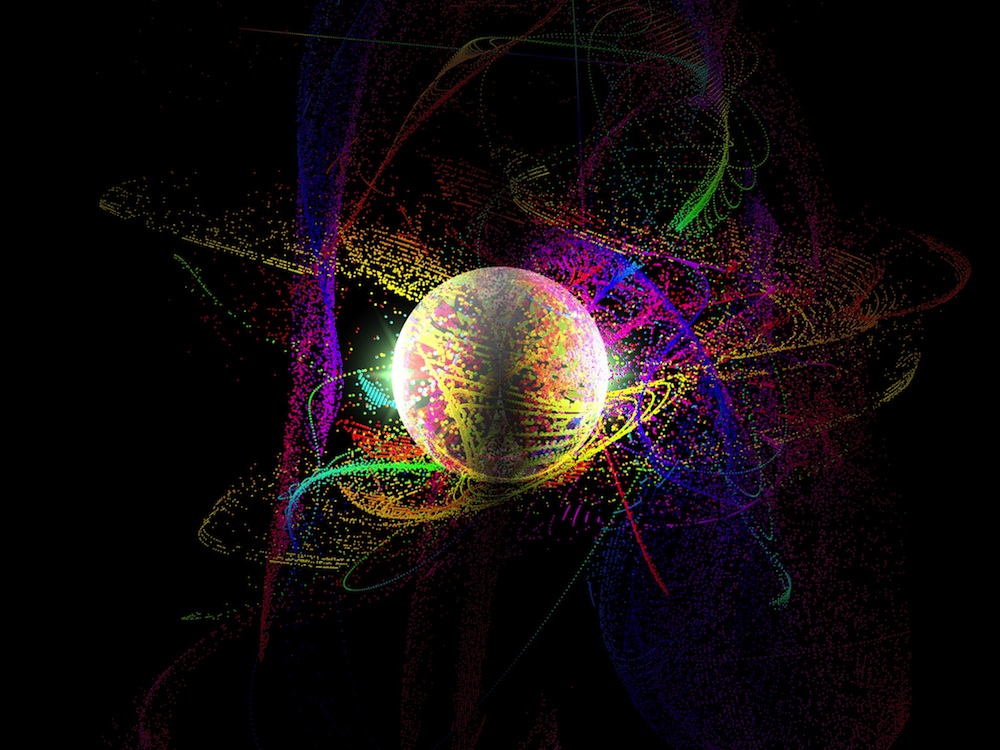
The pipe dream of speedy quantum computers may be a bit closer to reality.
For the first time, physicists have coaxed a quantum bit of information to maintain its superposed state, in which quantum bits stay as both a 1 and a 0 at the same time, for 39 minutes at room temperature, at least 10 times longer than previously reported.
The new achievement, described today (Nov. 14) in the journal Science, removes a major obstacle to making a viable quantum computer that can recover from noise and other potential errors.
Quantum computers
In a traditional computer, information is stored as bits of information that are 1s or 0s. But by taking advantage of quantum mechanics, the strange laws that govern the very small, scientists can create a bit of information in multiple states at once — essentially a bit that is both a 1 and a 0, or even many 1s and 0s at once. That could then be used to perform many calculations at once, enabling computers to solve big data problems that previously seemed hopelessly intractable, said study co-author Stephanie Simmons, a quantum physicist at the University of Oxford. [Twisted Physics: 7 Mind-Blowing Findings]
"Quantum bits support an exponential amount of information, so this can give rise to an exponential speed-up in computation time," Simmons told LiveScience.
But quantum computers also make error correction trickier. Normally, computers compensate for the occasional wrong bit of information by creating redundancy. If three or five or seven bits are storing the same data, then it's easy to take a majority vote to get the right answer most of the time.
Get the world’s most fascinating discoveries delivered straight to your inbox.
But it's impossible to copy the states of quantum bits, so once a bit decays, that information is lost. One solution is to create bits that last a longer amount of time and can do more calculations before decaying.
Long-lived bits
Toward that end, Simmons, along with colleagues at Simon Fraser University in Canada, took a tiny slice of silicon that contained small amounts of elements such as phosphorus. They encoded information in the spin — essentially the magnetic orientation — of the phosphorus nuclei, which can be in an up, down or in-between orientation.
The team then cooled the system to just 4 degrees Celsius above absolute zero, or minus 269 C (minus 452 degrees Fahrenheit). They then used magnetic pulses to create the superposition of magnetic spins in the phosphorus nuclei, meaning the nuclei are in multiple states at once. [Wacky Physics: The Coolest Quantum Particles Explained]
At the coolest temperatures, about 37 percent of the phosphorus ions maintained their spin state for more than three hours. When the team ramped up to room temperature, the quantum states were conserved for 39 minutes.
It takes only one hundred-thousandth of a second to do a calculation by flipping the spin of a phosphorus nucleus. So a quantum bit could perform 2 million operations before the system decays by 1 percent, Simmons said. (Physicists reporting this week in the journal Nature found a way to get qubits to remain in their superposed state for 10 minutes at extremely cold temperatures, using the magnetic properties of a rare earth element called holmium and the symmetry of platinum.)
In theory, the new advance means quantum computing could be used not just for doing calculations like a processor, but also for storing data. And unlike other systems, the materials the team used are already broadly used in traditional computers.
"The nice thing about silicon is that there's a huge industry that's been put together to bring silicon systems up to high quality," Simmons said.
Long road to go
The findings are genuinely exciting, Scott Aaronson, a computer scientist at the Massachusetts Institute of Technology, who was not involved in the research, said in an email.
"The best room-temperature coherence times I had seen cited before were less than a minute," Aaronson said. (Coherence time refers to the amount of time the nuclei remain superposed.)
Still, there are several obstacles to be overcome before laptops are replaced by quantum computers — namely, figuring out how to address individually each quantum bit, and getting them to communicate with each other for calculations, without spoiling the long lifetimes, said Aram Harrow, a computer scientist also at MIT, who was also not involved in the study.
Follow Tia Ghose on Twitter and Google+. Follow LiveScience @livescience, Facebook & Google+. Original article on LiveScience.

Tia is the editor-in-chief (premium) and was formerly managing editor and senior writer for Live Science. Her work has appeared in Scientific American, Wired.com, Science News and other outlets. She holds a master's degree in bioengineering from the University of Washington, a graduate certificate in science writing from UC Santa Cruz and a bachelor's degree in mechanical engineering from the University of Texas at Austin. Tia was part of a team at the Milwaukee Journal Sentinel that published the Empty Cradles series on preterm births, which won multiple awards, including the 2012 Casey Medal for Meritorious Journalism.


